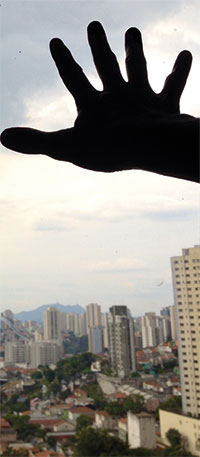|
What do a tree, a planet, an annoyance and a promise have in common? Their number: one! Numbers are the abstraction of language that enables us, among other things, to account for an amount regardless of quality. If a shepherd has only four sheep, he does not need to be an expert in numbers to check every morning that all four of them have made it through the night. He knows them all, maybe even by name: Panda, Tulip, Moorit and Teresa. But quantity, as an abstraction of quality, becomes essential if the shepherd’s flock consists of eight hundred sheep. One, Two, Three … they are natural numbers. Natural numbers count and order. Conversely, we must expand the family to include the mysterious zero number as well as negative numbers. It is a necessity, because otherwise we cannot give account of debt or get confused every thousand years in the celebration of the turn of the millennium… minus three, minus two, minus one, zero, one, two, three …they are integers. Integers count and order both sides of a reference point. However, this family is not enough because we cannot always assign an integer to each part when assigning quantities. A rational number is defined by a pair of integers … a half, two thirds, twenty two sevenths … Rational numbers, measure, calculate proportions, and solve some equations. Despite this, not all equations have real solutions, not every geometric problem can be dealt with using this family of numbers. For example, there is no rational number that multiplied by itself equals two. For example, the result of dividing the perimeter of a circle between its diameter is not a rational number. The square root of two or Pi are not rational numbers. They are real numbers. Real numbers solve geometry and some equations, although not all of them. For example, there is no real number that multiplied by itself equals minus one. We call this number the i imaginary unit. With this unit we can extend the family of real numbers to the good family of complex numbers. We sense, imagine and fully understand natural numbers, integers, rational numbers and real numbers, but how can we sense a complex or imaginary number? We shall try. Let’s look for a number which multiplied by itself equals minus one. Let’s imagine the geometrical representation of this search. It will simply be where two curves intersect, parabola y = x2 and line y = -1. However, the parabola is always on the positive side of the x y-plane, while the line y = -1 is always on the negative side. That is, the intersection between the two curves is impossible, which means the x 2 = -1 equation has no real solution [while curves y = x 2 and y = 1 intersect at point (-1.1) and (1.1)]. There is no situation in which parabola y = x2 and line y = -1 meet in the real world … But they can in the imaginary world! How can we imagine such a world? We just need to consider axis y = 0 as a semitransparent mirror. Parabola y = x2 and line y = -1 do not meet on this side of the mirror, but they do on the other side, since axis y = 0. Because it is a mirror, it reflects the parabola and, because it is transparent, we can see the line. Were the people who branded these numbers imaginary thinking about this metaphor? Probably not, but their intuition led them to make the right decision. Both imaginary and complex numbers live behind the mirror in Lewis Carroll’s Wonderland… They are poetic and from another world, but they have a lot to do with ours. In fact, in the fundamental laws of physics there are all kinds of numbers: 2, Pi or e but also the imaginary unit i. We need imaginary numbers to govern the real world (for instance Schrödinger equation in quantum physics), although at the end of the day we are only interested in real solutions, that is, those that belong to this side of the mirror. Jorge Wagensberg. Full Professor at the Department of Fundamental Physics. University of Barcelona. |
 Jorge Wagensberg Jorge Wagensberg
«Numbers are the abstraction of language that enables us, among other things, to account for an amount regardless of quality»
|
Search
© Mètode 2015 - 84. What Is Science? - Winter 2014/15
Jorge Wagensberg
Professor at the Department of Fundamental Physics. University of Barcelona (Spain).





